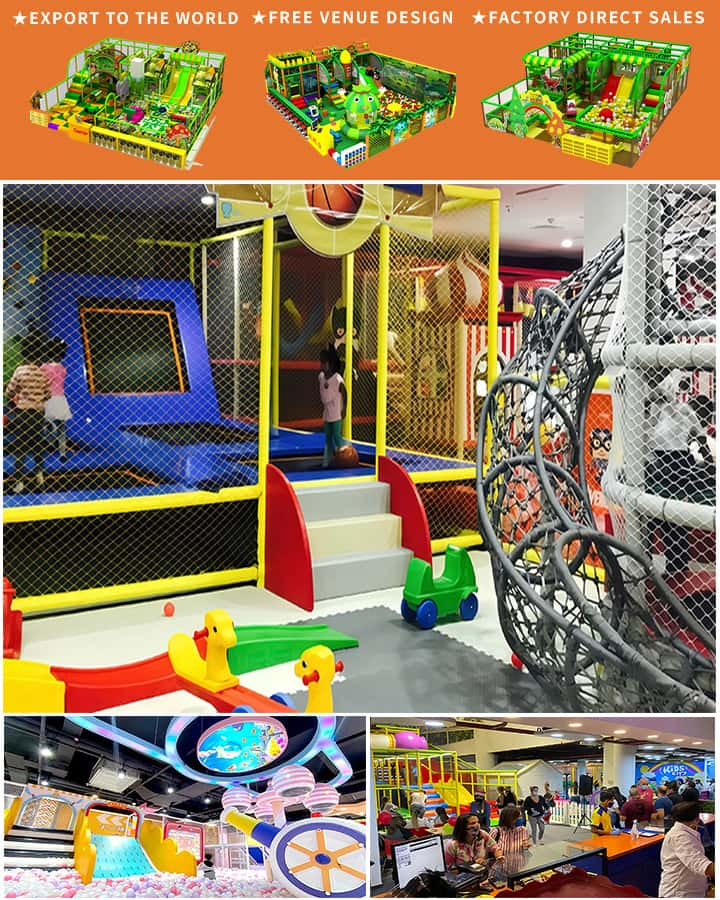In today’s fast-paced world, providing a safe and engaging environment for children to play in is more important than ever. Indoor play areas are an excellent solution for parents and caregivers who want to ensure their little ones have fun while developing crucial physical and cognitive skills. The right indoor play area equipment can transform a simple room into an adventure-filled space of imagination, learning, and growth. This article will explore some essential pieces of indoor play area equipment that can help create a vibrant and stimulating environment for children.
1. Climbing Walls and Slides
Climbing walls and slides are fundamental components of any indoor play area. They encourage physical activity, enhance motor skills, and boost confidence as children navigate different textures and angles. A well-designed climbing wall can include various gripping surfaces and handholds to cater to different age groups and abilities. Coupled with a slide, these structures offer endless hours of fun while promoting physical fitness and coordination.
2. Ball Pits and Foam Pit Trampolines
Ball pits are classic attractions that never go out of style. Filling a soft, cushioned area with colorful plastic balls provides sensory stimulation and a great outlet for energetic play. For added excitement, consider incorporating foam pit trampolines. These safe, enclosed spaces allow children to jump and flip without the risk of falling, offering a thrilling yet secure experience. Both ball pits and foam pit trampolines promote gross motor skills, balance, and spatial awareness.

3. Interactive Learning Panels
Educational play is just as important as physical play. Interactive learning panels are fantastic tools for fostering cognitive development. These panels typically feature a variety of activities such as shape sorters, spinning gears, and musical instruments. They engage children in problem-solving tasks and encourage creativity while they learn about colors, numbers, and letters. Interactive panels are perfect for keeping young minds sharp and curious.
4. Soft Play Structures
Soft play structures are essential for creating a safe indoor play area. Made from cushioned materials like foam or padded vinyl, these structures come in various forms including tunnels, bridges, and mini obstacle courses. They provide an opportunity for imaginative play while protecting children from injuries during rough-and-tumble activities. Soft play structures also help develop social skills as kids interact and collaborate with one another.
5. Role-Play Areas
Role-play areas, such as mini kitchens, doctor’s offices, and market stalls, stimulate creativity and social interaction. These setups allow children to imitate adult roles and scenarios, which can be both entertaining and educational. By pretending to prepare meals, check patients, or run a shop, children learn about the world around them and develop essential life skills such as communication, empathy, and cooperation.
6. Art Stations
Art stations are indispensable for nurturing creativity. Equip your indoor play area with tables covered by washable tablecloths, child-safe paints, markers, crayons, and other craft supplies. Allowing children to express themselves through drawing, painting, and sculpting not only keeps them engaged but also aids in fine motor skill development and emotional expression.
Conclusion
An indoor play area equipped with the right mix of climbing walls, ball pits, interactive learning panels, soft play structures, role-play areas, and art stations creates a comprehensive environment where children can grow, learn, and have fun. Thoughtfully designed play spaces provide a foundation for physical health, cognitive development, and social skills. Whether at home or in a dedicated facility, investing in high-quality indoor play area equipment ensures that every child has the opportunity to explore, imagine, and thrive.




